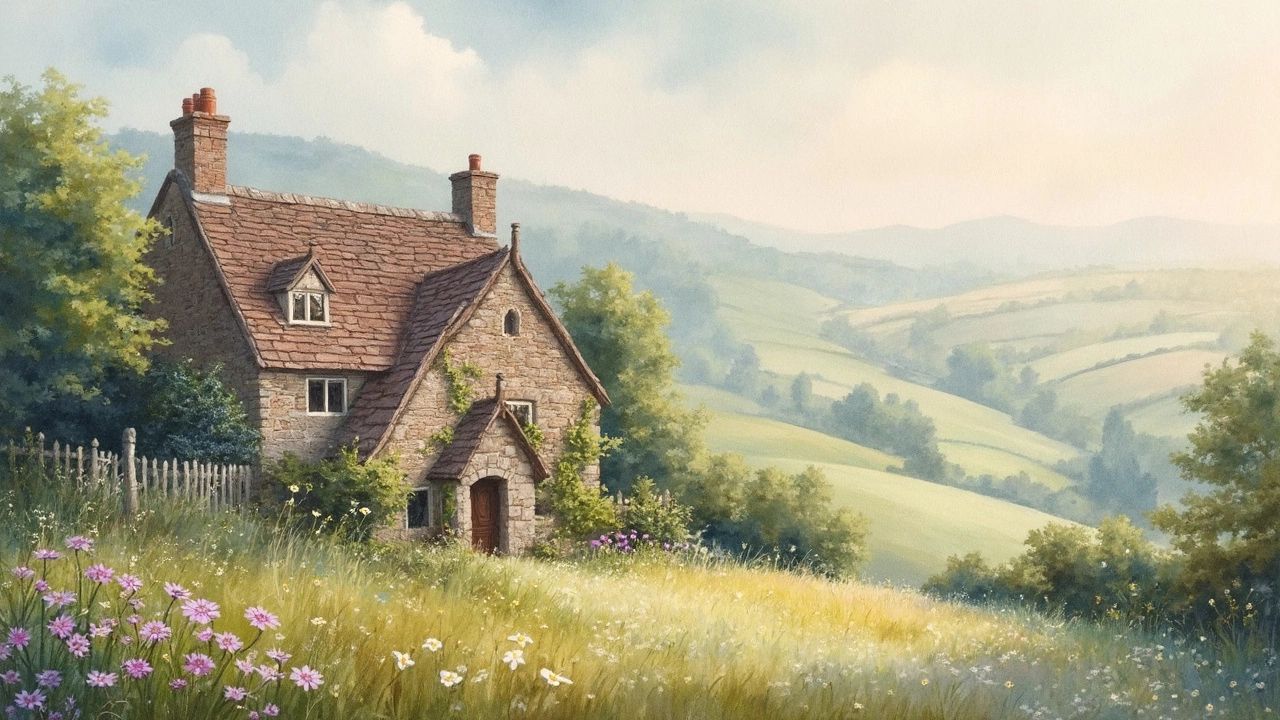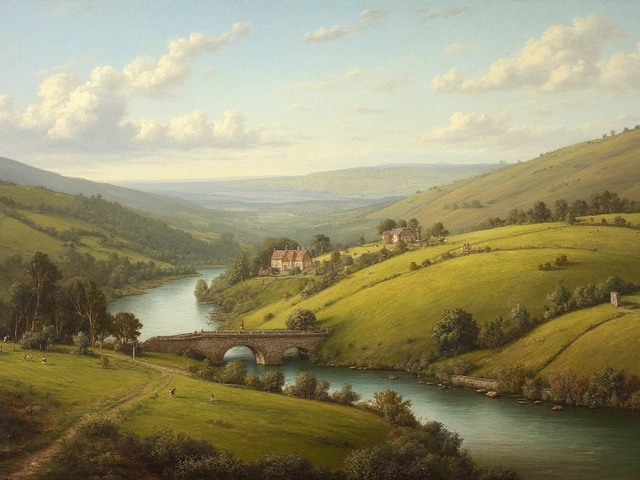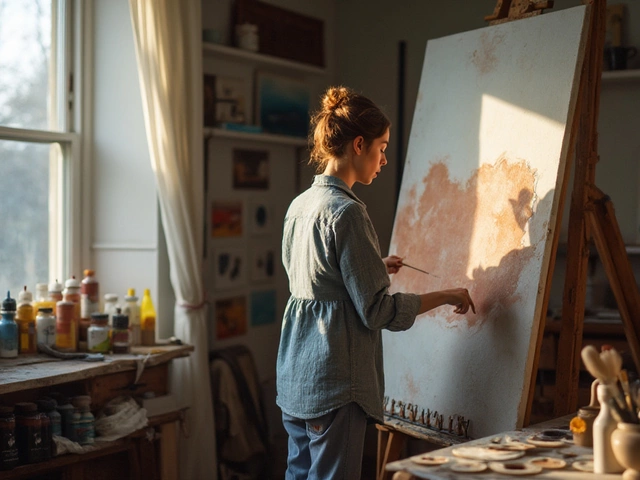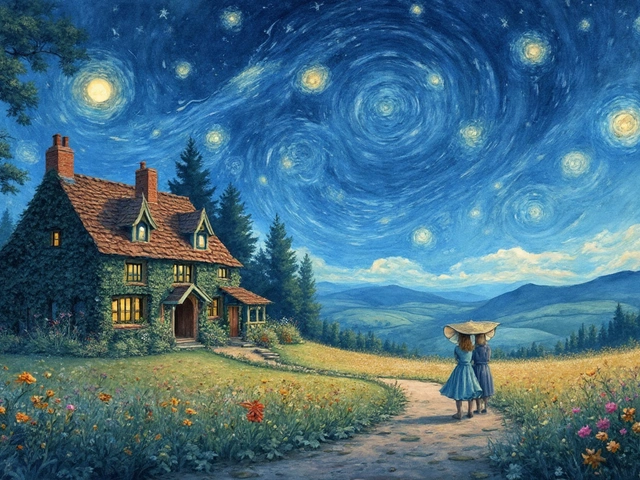Did you know that England is often hailed as the epicenter of watercolor painting? Yep, when it comes to watercolor, the British have truly left their mark. Think of famous artists like J.M.W. Turner or John Constable—they’re the gurus of the watery pigment world! Their techniques and mastery have influenced generations of artists globally.
But why England? Well, it kind of makes sense. Picture those sprawling landscapes, unpredictable weather, and the unique light quality. These elements inspired artists to capture the essence of nature using translucent pigments. It’s like they had a perfect canvas right in their backyard.
If you’re an aspiring watercolorist, England’s rich history offers plenty to learn. From techniques like wet-on-wet to more precise dry brush methods, soaking up these skills can elevate your watercolor game big time. Plus, it's all about expressing yourself and finding what works for you—don't be afraid to experiment!
The Watercolor Capital
When it comes to watercolor painting, England often steals the spotlight. It’s not just about having a bunch of famous artists; it’s about a culture that has embraced watercolor as its artistic heartbeat.
Historically, watercolor was used for sketches and preparatory designs for oil paintings. But in England, during the 18th and 19th centuries, it evolved into a standalone art form. Artists like J.M.W. Turner and Paul Sandby played significant roles in this transformation. They didn’t just paint; they redefined the art by using watercolors for their masterpieces rather than preps.
Why England, you ask? The landscape and lighting here are unique. The rolling hills, rich with subtle hues of green and brown, and the often-muted skies, offer the perfect subjects for watercolor’s gentle and fluid translucence. Plus, English artists loved experimenting with how light behaved on paper, often giving their works a luminous quality that was hard to replicate with oils.
Techniques Flourishing in England
One reason English watercolor artists stood out was their innovative techniques. They mastered methods like 'wet-on-wet' where colors bleed into one another, creating soft transitions. There's also 'wet-on-dry' for those crisp edges and defined details. These might sound basic now, but back then, manipulating water like this was groundbreaking.
Art Societies and Exhibitions
By the 19th century, watercolor was so popular in England that it led to the establishment of societies like the 'Royal Watercolour Society'. Such organizations weren’t just clubs; they were platforms for artists to showcase work, share techniques, and elevate watercolor art on an international stage. In fact, these societies helped to gain a wider acceptance and appreciation for watercolor.
- Pro Tip: Want to experience this yourself? Try painting an English landscape. Focus on capturing the light and contrast. It’s challenging but rewarding!
- Don’t forget to study works from watercolor masters for inspiration.
- Experiment with different techniques to find your unique style.
So, when you think of a place where watercolor truly bloomed, England has to be one of the first on your list. The blend of its picturesque scenery and innovative artists kicked off a revolution that redefined art forever.
Historical Impact
When it comes to the *historical impact* of watercolor, England takes center stage. Back in the 18th century, watercolor paintings began gaining massive popularity among the British elite. It wasn't just an art form but a way to capture the serene landscapes, changing skies, and architectural wonders of England.
The rise of watercolor painting in England can be largely credited to figures such as J.M.W. Turner. He took the art world by storm with his breathtaking landscapes, pushing the boundaries of what watercolor could achieve. Can you imagine the scenes he captured? The Translucent hues of sunsets and rain-soaked streets—sheer genius!
Moreover, the advancements in paper making and pigment availability in the 18th and 19th centuries played a crucial role. By improving these materials, artists could experiment more and enhance their technique. Talk about perfect timing, right?
Influential Artists
Several artists left a monumental impact on the watercolor scene. Aside from Turner, artists like John Constable and Thomas Girtin should be on your radar. These artists contributed to the modernization of landscape painting, shifting it from simple sketches to intricate and emotive works.
Watercolor societies also sprang up around Britain, marking the formal appreciation of this art style. The Royal Watercolour Society, established in 1804, provided a community for artists to innovate and inspire one another.
Evolution Over Time
Over the years, the style and purpose of watercolor have evolved. Initially used for topographical paintings and travelogues, watercolors gradually became a medium for more personal expressions and contemporary themes. Artists played with its fluidity, creating pieces that were both delicate and powerful.
The influence of British watercolor artists rippled across the globe, inspiring painters in countries like the United States and Canada. The colonial expansions also meant that British techniques spread, encouraging a fusion of styles and a richer, global art tapestry.
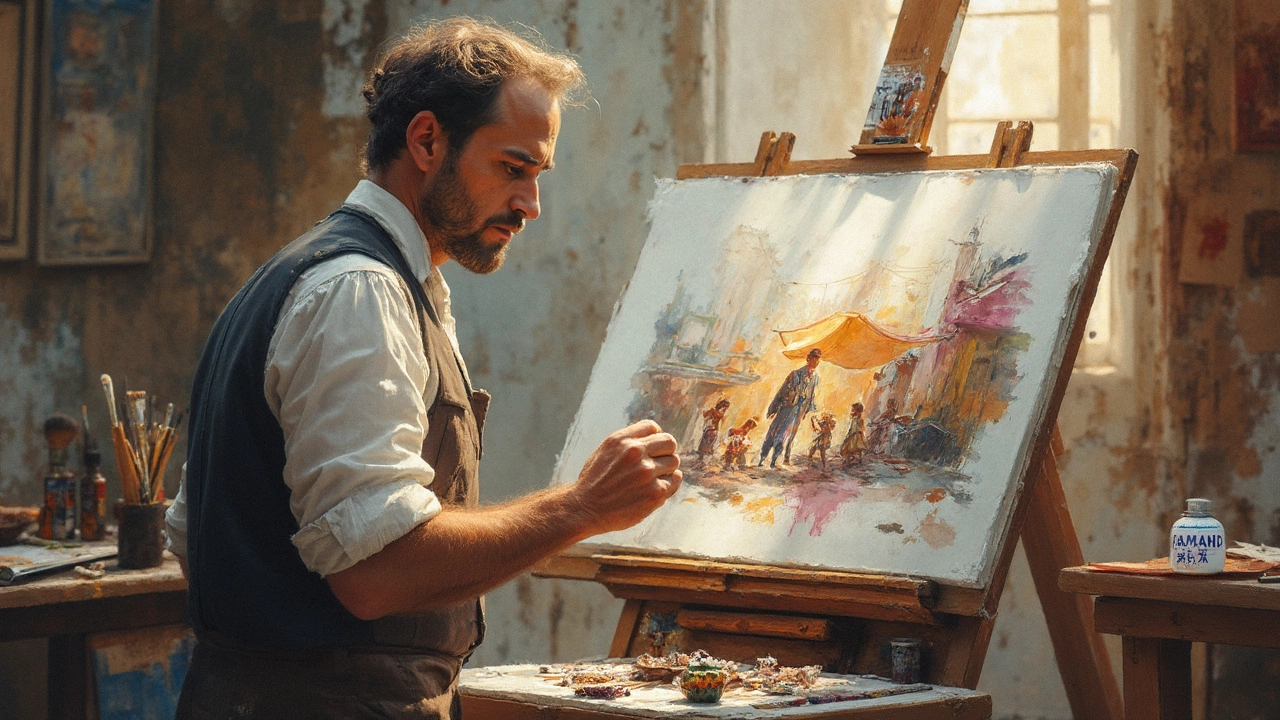
Techniques and Styles
When it comes to watercolor painting, artists are spoiled for choice with various techniques that open doors to creativity and expression. Let's dig into a few popular styles and methods that have marked their space in the watercolor world.
Wet-on-Wet
One of the go-to techniques is the wet-on-wet approach. Imagine painting on a pre-moistened paper. It allows pigments to blend organically, creating soft transitions and dreamy backgrounds. This style gives landscapes and skies a magical feel, making it a favorite for those aiming for a natural look.
Dry Brush
On the flip side, we have the dry brush technique. It’s like the polar opposite of wet-on-wet. Here, you'll be using a brush with minimal water, offering more control and allowing for detailed textures. Perfect for capturing the nitty-gritty of architectural elements or intricate scenes.
Layering
Layering in watercolor is like building a story. Artists often layer washes to create depth, letting previous layers shine through. This technique needs a bit of patience, as it’s crucial to let each layer dry before applying the next. The outcome? Rich and vibrant artworks with a lot of character.
Color Lifting
Mistakes happen, but don't worry—there’s a trick called color lifting. Using a clean, damp brush, you can lift excess pigment from the paper, correcting areas or adding highlights. It’s a clever hack to keep things tidy or add those last-minute touches.
If you're starting, here's a quick tip: experiment with different papers, brushes, and paints. Even the same technique can look completely different based on these factors. Plus, who doesn't love an excuse for a little art shopping spree?
Tips for Aspiring Artists
Diving into the world of watercolor painting can feel daunting, but with a few key tips, you’ll be on your way to creating art that sings. Whether you aim to become the next J.M.W. Turner or just want to dabble, here are some practical steps to get you started.
Get the Right Supplies
You don't need to break the bank, but investing in quality supplies makes a world of difference. Look for good paper—like 140lb cold-pressed variety—and dependable paints. Trust me, using good stuff from the get-go will save you headaches later on.
- Paper: Heavier paper won't buckle when wet.
- Brushes: A round brush in size 6 or 8 is versatile.
- Paint: Go for professional-grade pans for better pigments.
Embrace Experimentation
Watercolor is unpredictable, and that’s where the magic happens. Don't be afraid to mess around with the medium. Practice techniques like wet-on-wet or dry brush. Mix colors on the paper and see what happens. Discover what feels right for you.
Learn from the Masters
Observing the work of seasoned artists offers incredible insights. Head to a gallery or explore online collections. As Winston Churchill once said,
"Happy are the painters, for they shall not be lonely. Light and color, peace and hope, will keep them company to the end."Churchill himself was an avid painter—there's proof that you're never too late to start!
Practice, Practice, Practice
No shortcuts here. The more you paint, the more you learn. Dedicate time each week to refine your skills and build your style. Paint for yourself and let your unique view of the world shine.
Seek Feedback
Join online forums or local art classes to meet fellow enthusiasts. Constructive criticism can boost your work to new heights. Remember, it's all about growth!
By focusing on these fundamentals, you’ll find your confidence in watercolor art blossoming in no time. Enjoy the journey and happy painting!
